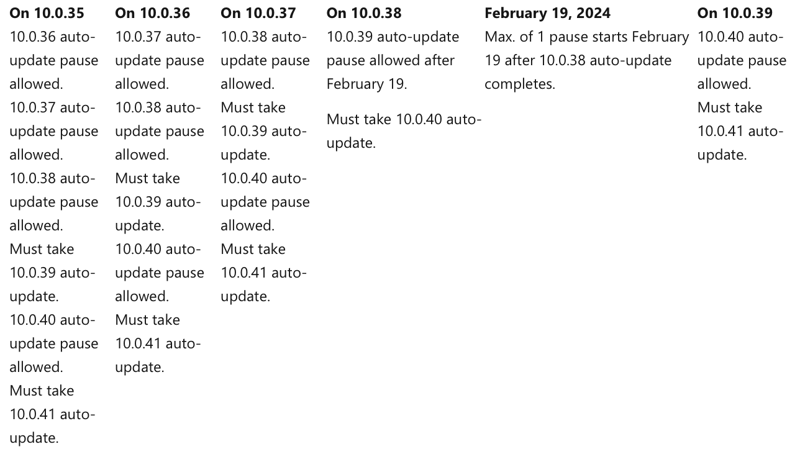Microsoft One Version: What it Means for Testing and QA
One Version is a mission introduced by Microsoft that implicates Dynamics 365 business applications. The aim is to have all customers operating on one version of Microsoft’s products, as this will have a positive impact on the quality and ability to service those products.
However, it also has the effect of increasing the need for software testing. To some businesses, this means a shift in their testing approach. Learn why in this article.
Continue reading this blog to get an easy overview and to understand the exact implications for QA, as well as what you can do to adjust your strategy to the changes that took effect on February 19, 2024.
Skip to:
- What is D365 One Version?
- The QA challenges of moving to D365 One Version
- Continue learning about One Version
What is D365 One Version?
The One Version mission was introduced by Microsoft with the aim of ensuring that their customers are operating on the latest version of their Dynamics 365 applications, including Finance, Sales and Business Central. This helps create a better user experience, with fewer compatibility issues and greater overall quality.
Being on the latest version means customers always use the most up-to-date security patches and features, helping to protect against cybersecurity threats and data breaches.
|
Why One Version? It helps provide a seamless and consistent experience for Microsoft D365 users |
What is it? A series of initiatives, including regular, mandatory updates with new features, bug fixes, and security enhancements |
How does it work? D365 customers automatically receive regular, scheduled updates to the applications |
Good to know about Proactive Quality Updates:
A recent and significant step in the One Version journey has been to introduce what are known as Proactive Quality Updates (PQUs): these occur monthly and are automatically applied to all of the applications in the portfolio of D365. A key thing to take into account is that these updates are mandatory – customers are automatically enrolled and cannot postpone or reject them. Customers can, however, choose to test functionality a week ahead of the update in a sandbox environment.
Good to know about Service Updates:
For Microsoft's Service Updates, the following changes apply:
- As of February 2024, the service update cadence is changing to a quarterly cycle. In the same breath, Microsoft is reducing the maximum number of consecutive updates that can be paused from three to one, hence, the minimum of service updates per year is two.
- Both cloud deployments and on-premises are governed by this policy and new schedule for service updates. If customers neglect updating on-premises deployments as per this policy, they will be in a state of “end-of-service”.
- The Support team at Microsoft will not accept cases for issues that are reported from versions that are at their end-of-service.
Here's an overview of the new service release schedule, where you can see how those changes apply to the different versions:

Image source: Microsoft
Make sure to also read Microsoft's One Version Service Updates FAQ.
The QA challenges of moving to D365 One Version
Despite the benefits the One Version missionbrings to its customers in the long run, there are implications for QA teams here and now. In order to accept the latest and greatest version with new features and capabilities, QA teams will need to increase testing to ensure coverage in time for each update.
Because One Version’s PQU’s are mandatory, they will have the effect of raising the average quality of Microsoft’s software. However, every time new code is released, it brings the risk of impacting existing code. This means customizations and integrations across the business’ IT landscape are at risk of breaking with each update.
The alternative to increasing testing is a high-risk approach, where QA accepts low coverage and heightened risk while also accepting that they don’t have the resources to do otherwise. Many teams rely on this approach, because they have been unable to successfully adopt a scalable test automation strategy.
Often, regression testing in Dynamics is what’s compromised as a result of a risk-based approach. Not because it isn’t important, but because it’s extremely time-consuming for businesses with large and complex IT environments.The dependency on manual testing is currently counteracting the most important mission of using software in enterprises: driving efficiencies, improving productivity, and delivering software at speed to improve competitive position in the marketplace.
Businesses that rely solely on manual testing will be at risk of falling behind their competitors who are using test automation to increase efficiency and productivity.
With a solid test automation solution, QA can increase test coverage, test for regressions with every release, reduce risk, and accept each update with full confidence in the quality of their software.
If you're currently automating with RSAT, make sure to check out this article: RSAT Alternatives - Top 3 Testing Tool Comparisons, where Microsoft CTO Mike Ehrenberg provides his input on tool selection.
Continue learning about One Version
Sign up for our webinar on One Version to learn everything you need to know about Microsoft’s One Version updates, including key facts and important dates:

